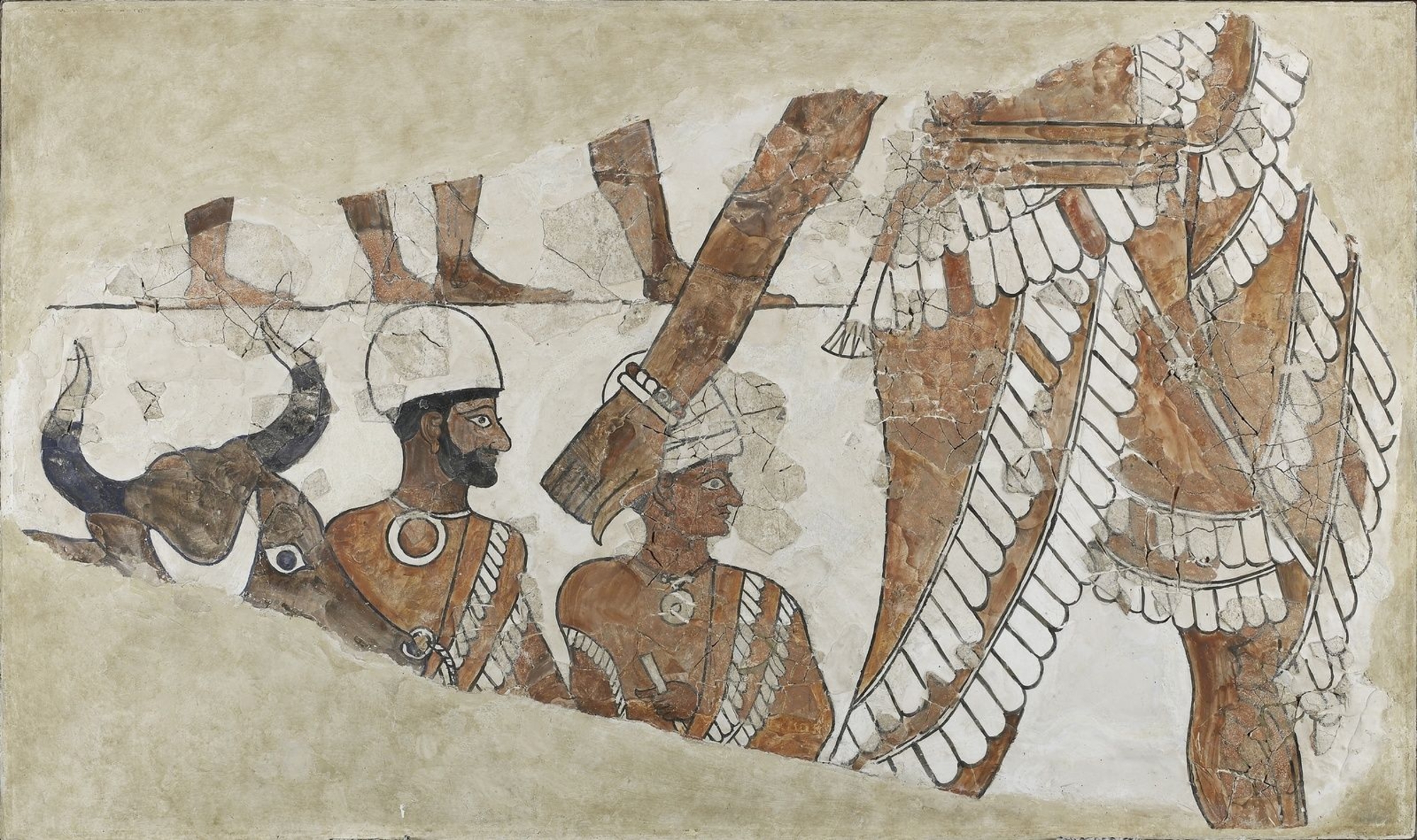
- Home
- The Great royal palace of Mari
- The palace and the arts
- Decoration and furniture
Although looted and then burned by Hammurabi of Babylon, the palace of Mari is the most revealing of the large Syro-Mesopotamian buildings surviving from the Bronze Age.
Wall decoration
All ceremonial spaces have direct or indirect instances of wall decorations: paintings – including the oldest known faux marbling – emphasise the architectural structure or glorify the king and gods in scenes with bold colours dominated by red, blue, ochre and white with a strong black outline; some walls had holes for fixing hangings rather than panelling, given the scarcity of wood in these regions.
Statues
Areas with a certain sacred character contained statues, including of high-ranking men or women, anonymous or bearing an inscribed dedication in the temple sector, dynastic ancestors on the tribune in the Throne room, and in the adjoining hall, a goddess holding a vase of which the flowing waters, a symbol of life, are engraved on her dress.
Furniture
Neither the instruments of the musicians who attended the king nor the palace’s wooden furniture have survived beyond a composite decorative panel and a frit mosaic from a collapsed upper floor. A small number of terracotta 'baths' are more likely to be storage containers, mostly set into the ground, sometimes next to a 'Turkish' latrine arrangement; one of these wet areas had a chimney.
Tableware
A number of terracotta baking moulds with geometric or animal motifs were stored on the upper floor and used for large banquets. Nothing of the precious metal tableware recorded in the written inventories was found. Huge storage jars were unearthed, on the other hand, in-situ in the palace warehouses. They were used to store oil and wine for banquets. Every day, the palace stewards managed the distribution of rations to several hundred people, especially the women who lived in the palace. The domestic quarters provide evidence of popular devotion in the form of mould-pressed terracotta reliefs.
Partners and authors
Associated media
Open Media Library

Two baths in bathroom 7

Large ornamented jars

Large storeroom jars

Wet room 7: basin and base of chimney flue

Wet room 7: detail of the chimney

Wet room 77, view from above

Southwest corner of Room 4 with jars and chimney

Baking moulds in situ

Store 78 adjoining the Throne room

